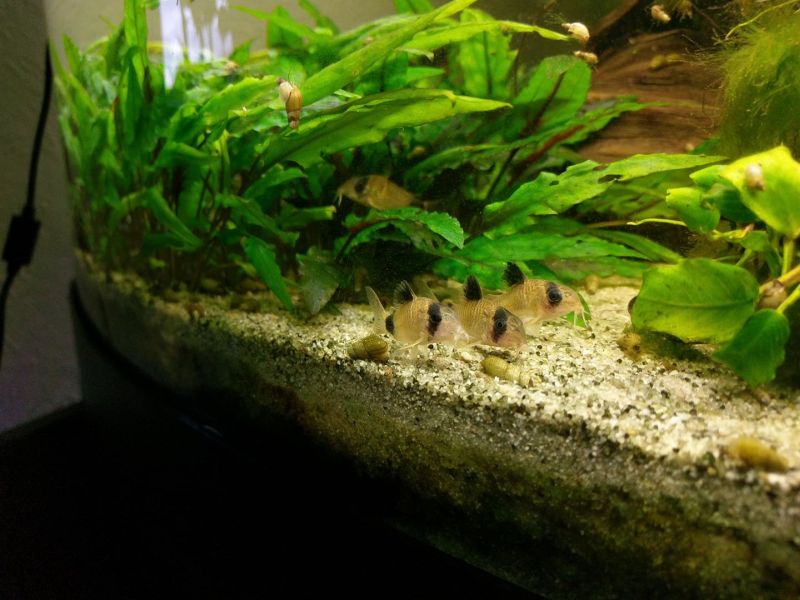Table of Contents
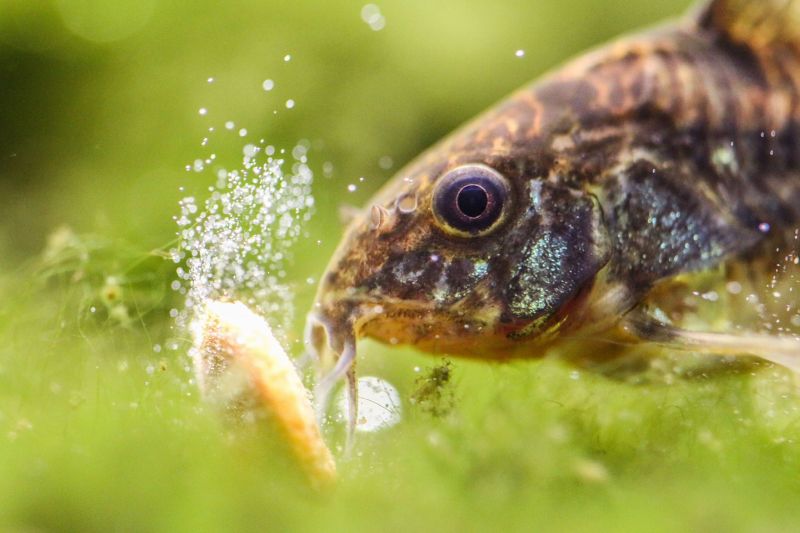
Genus and families of armored catfish
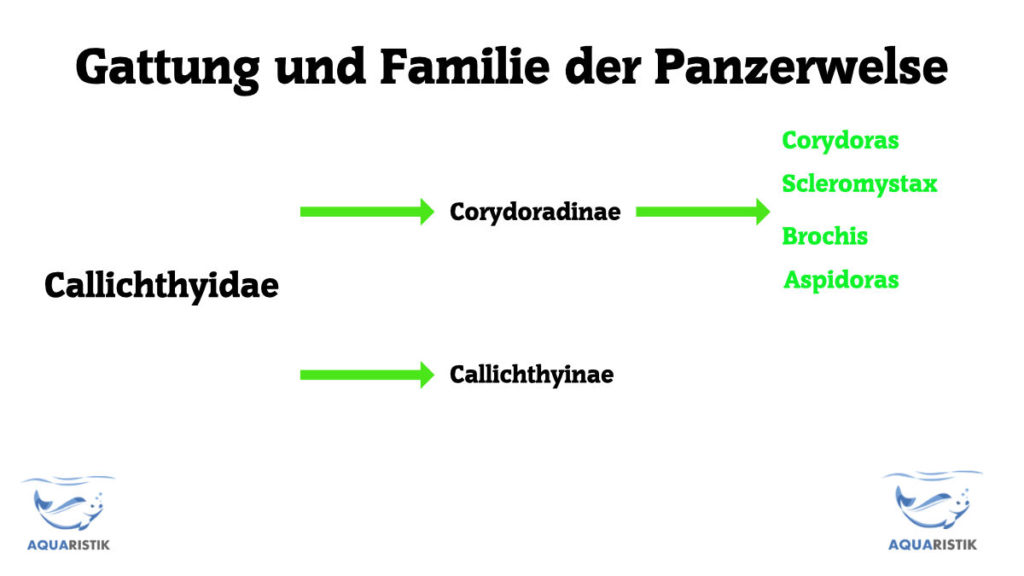
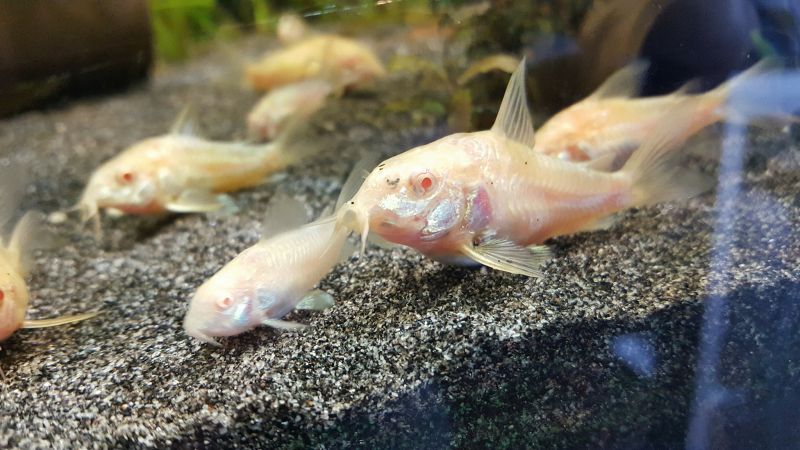 Armored catfish belong to the armored and calloused catfish genus and are therefore part of the family Callichthyidae assigned. This family is divided into two subfamilies. One of them is the group of Corydoradinae and the other group is the callichthyinae. The second is the group of callous catfish, which we do not want to describe in detail here. This is all about the armored catfish, which are in the first subfamily of the Corydoradinae finds. There are, of course, various subspecies or genera. The most well-known in our aquariums is the group Corydoras. Here you can find, for example, the well-known metal armored catfish or the marbled armored catfish.
Armored catfish belong to the armored and calloused catfish genus and are therefore part of the family Callichthyidae assigned. This family is divided into two subfamilies. One of them is the group of Corydoradinae and the other group is the callichthyinae. The second is the group of callous catfish, which we do not want to describe in detail here. This is all about the armored catfish, which are in the first subfamily of the Corydoradinae finds. There are, of course, various subspecies or genera. The most well-known in our aquariums is the group Corydoras. Here you can find, for example, the well-known metal armored catfish or the marbled armored catfish.
The basic difference between calluses and armored catfish is the lack of a row of bony plates between the dorsal fin and the adipose fin. In addition, armored catfish do not grow as large as the calloused catfish.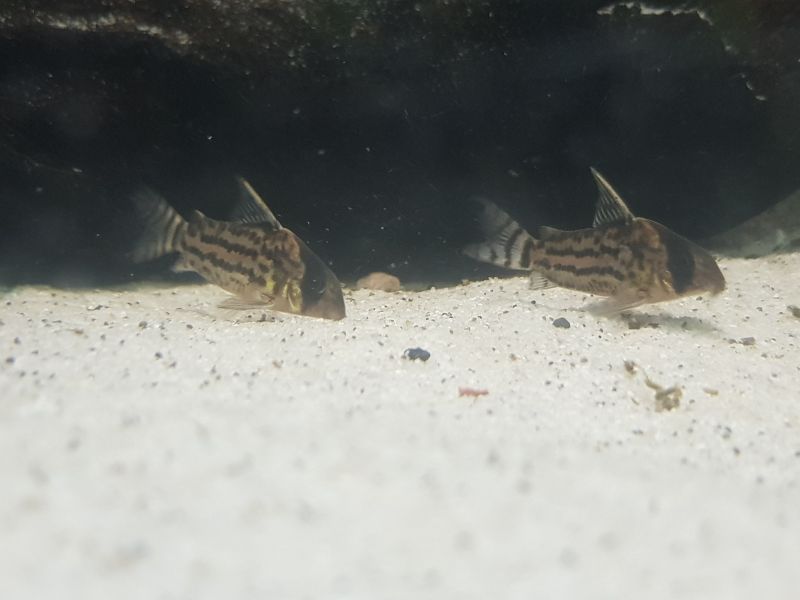
In the armored catfish family, however, a further distinction is made. Here you will find next to the groups already mentioned above Corydoras also the Brochis, Aspidoras and scleromystax. All are just different genera which are mostly quite similar. However, the origin is quite different. In addition, the number of dorsal fin rays is different. Even a practiced eye can tell which species you have in front of you. Counting the dorsal fin rays is not easy, however, because they are often very thin.
Origin of the armored catfish
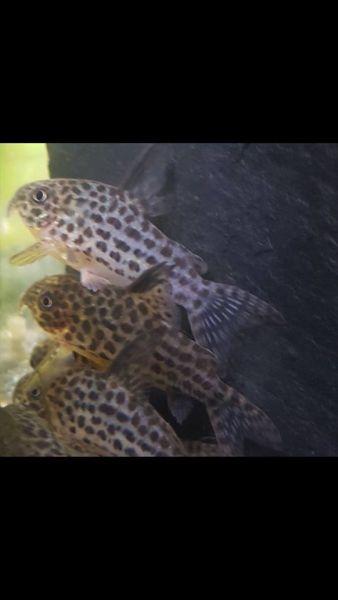 Where can you find many species of armored catfish anyway? By the way, there are far more than 150 species of armored catfish. We present an overview here and certainly not all values of the individual species and genera can be discussed.
Where can you find many species of armored catfish anyway? By the way, there are far more than 150 species of armored catfish. We present an overview here and certainly not all values of the individual species and genera can be discussed.
Most species can be found in South America. Many live there amazon basin and also in the Orinoco river basin. Mailed catfish are also found in rivers in Panama and Trinidad. Argentina and Brazil are also many areas of origin of the armored catfish. Main rivers and tributaries are also inhabited by armored catfish. Above all, calm and still waters with little current are loved. In addition, the soil should be rather sandy and soft.
Corydoras are not only found in the blackwater, but also in White water like those of the Rio Huallaga or Rio Napo and also in the clear water in central Brazil.
Peculiarities of armored catfish
The different areas of origin also produce a special feature of the armored catfish, because they have a special organ that is not found anywhere else. The reason is the origin from areas which very little Oxygen have in the water. This is due to tributaries and standing water. The oxygen enrichment of the water is not enough for the armored catfish, so that in the course of evolution they develop a so-called "intestinal respiration” have appropriated. The intestinal breather have the possibility atmospheric oxygen record. They usually swim to the surface of the water quite quickly and then dive down again. This intestinal breathing helps them to survive even in bad waters. They basically take a portion of air from the surface and then dive down again. With this facility, the armored catfish can survive well even in heat and dry periods. Usually they survive on it also many other water dwellers, if the oxygen content comes to an end.
Appearance of armored catfish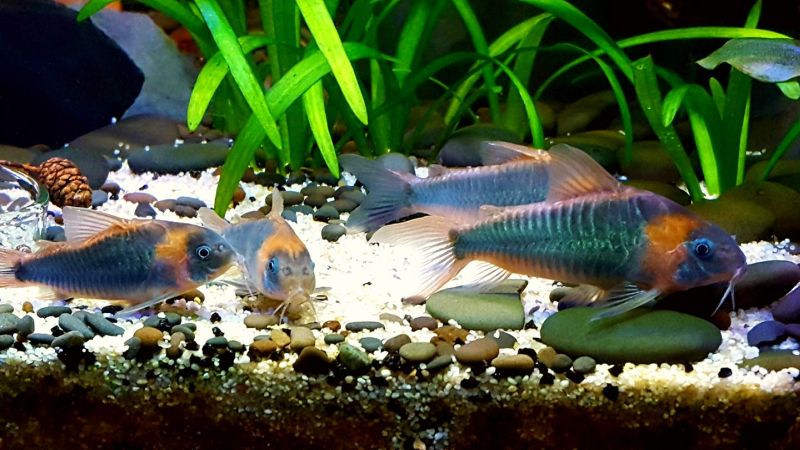
There are only a few differences in the basic form. But the name armored catfish also has a specific reason. Between the head and caudal fins they have two continuous rows of bone plates, which are arranged like roof tiles. These always overlap and form two continuous lines. The armored catfish's swim bladder has two chambers and is surrounded by a bone capsule. As is also known from other catfish, armored catfish also have barbels on their mouths. Depending on the species, this can either be two pairs or just one pair of barbels. This is used to search for food on the ground.
The physique can be described as quite compact. The topline slopes down flat towards the caudal fin. The head shape is also steeply sloping. The adipose fin is quite large compared to the physique and size. As always, pictures speak louder than words.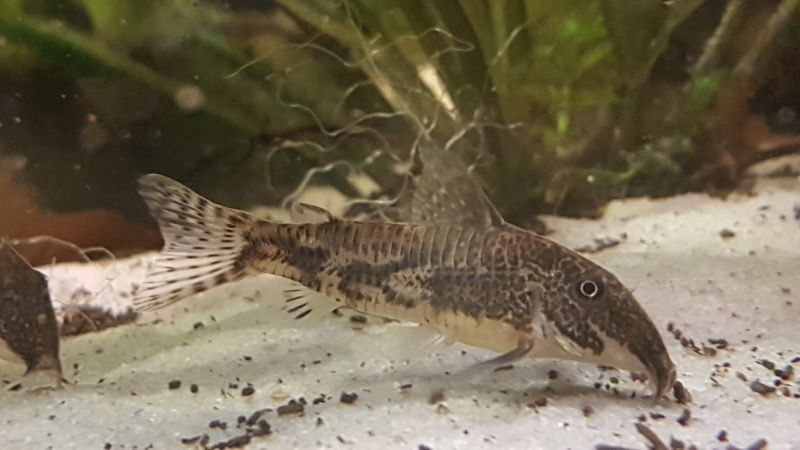
The size of the armored catfish is quite different, whereby these are rather smaller species. Compared to the callous catfish or other L catfish species, the armored catfish remain extremely small. You can assume 2-8 cm. Of course, there are also species that grow to over 15 cm. However, these are rarely found in our domestic aquariums. The smaller species such as the group of Corydas or the Aspidoras even find their place in nano aquariums. But you have to be careful here, because if you look at the social behavior of the animals, then they should always be kept in groups.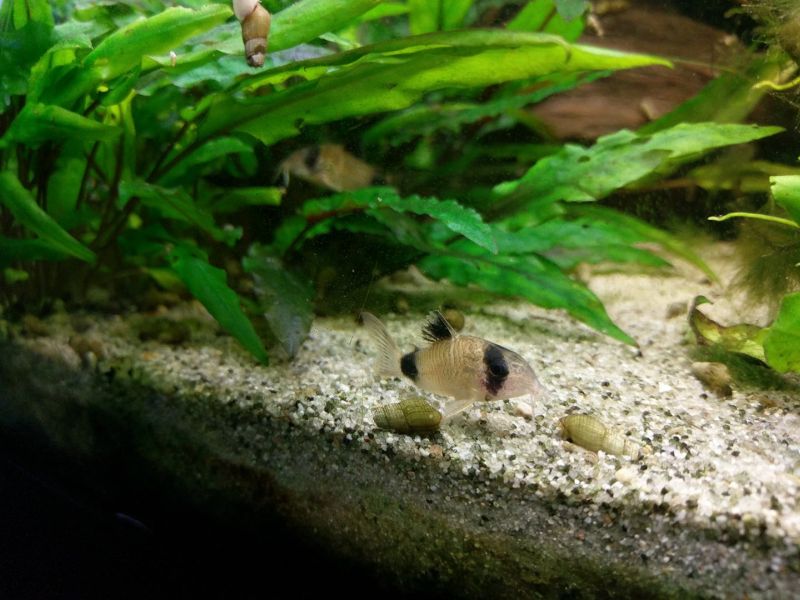
Social behavior of armored catfish
Almost all species are extremely peaceful and are therefore also well suited for that community aquarium. Their behavior can be described as extremely social. That's why they should also Groups from at least 6 animals being held. There are hardly any single or pair animals. If you want to keep different species, this can also work, since territorial behavior is less pronounced. But here, too, there should be groups of 6 or more animals. Also the socialization with other animals is usually no problem.
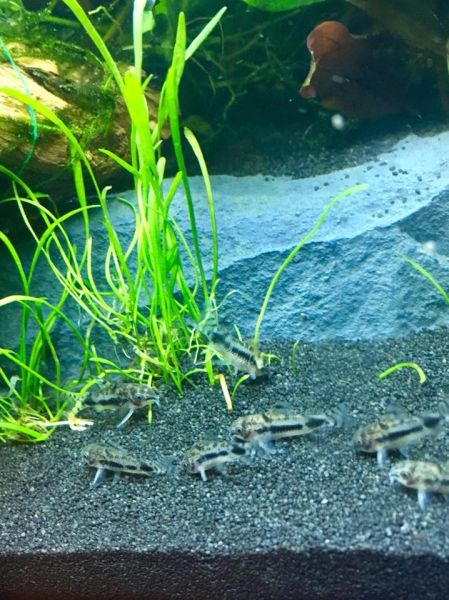
Water parameters and requirements of armored catfish
Let's start in the profile with a look at the temperature. Most species feel at Temperatures from 22 degrees and up to 28 degrees quite well. Higher and even lower temperatures can also be tolerated for short periods. Of course this should be avoided. The origin of this extreme temperature tolerance comes from the extreme conditions of their origin.
Auch was die Hardness the animals are suitable for beginners. Up to a degree of hardness of 20 - 25 degrees German hardness should not be a problem. When it comes to breeding, things are a little different, but more on that in a later chapter.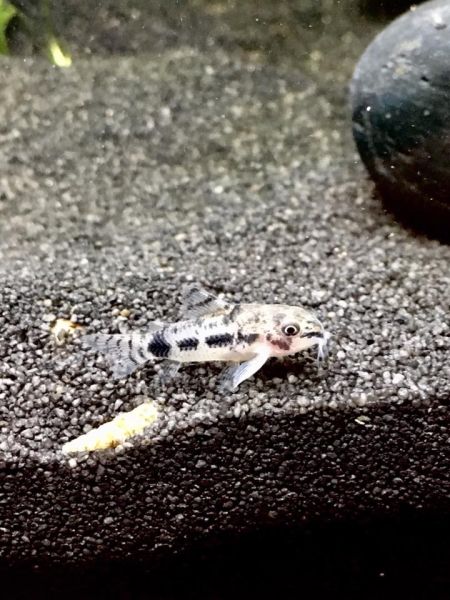
The PH value should be in the range of around 7, whereby it also applies here that values even up to 8 and also below 7 can be tolerated. Of course, it also applies here that you should aim for a value of around 7 and ideally an overall hardness of around 10. Thus, the chances of breeding are quite large.
In conclusion, one can say that armored catfish usually find much more heavily polluted waters in nature. Be it through organic or bacterial loads. These should be reduced in the aquarium. Hence the longer life expectancy.
Within the size of the aquarium the specialists argue. Again and again it is said that armored catfish can even be kept in a nano aquarium with a capacity of 30 liters. However, we strongly advise against this, because good swimmers need space. Even in a 54 or 60 liter tank with an edge length of 60 cm it will be rather tight to keep a larger group here. We recommend tanks with an edge length of at least 80 cm for stocking armored catfish. In this train also a reference to the Article to the exact stocking thickness in the aquarium.
Recognize the sex of the armored catfish
How can I tell if it's a male or a female acts? This question can be answered quite quickly with adult animals. Basically, you can recognize the female by the fact that this is significantly more corpulent than the male. The fat belly should be recognized quite quickly here. You can also recognize it by the adipose fin. There, the male has a slightly upward-going and pointed fin, and in the female, this is usually rounded down.
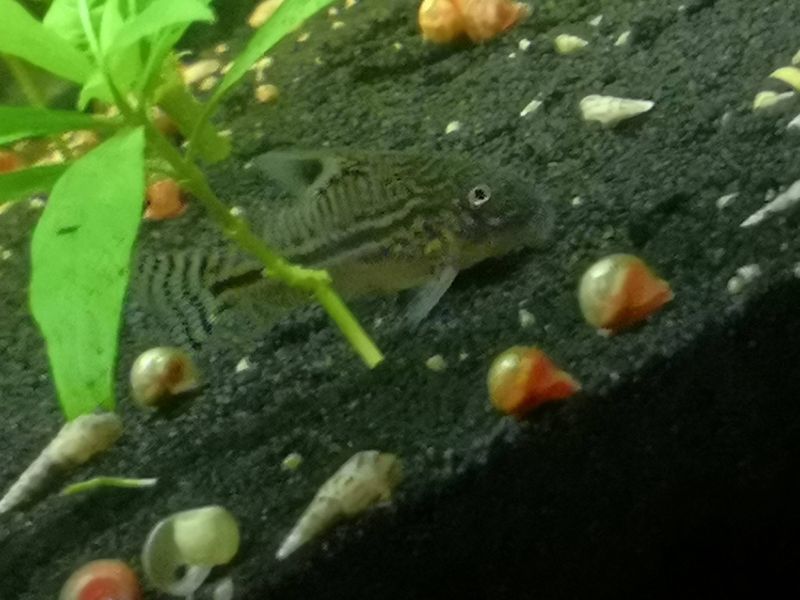
Age of armored catfish
Most armored catfish can get quite old. They can, above all, in a species-appropriate attitude and also feeding in the aquarium up to 10 years grow old (in exceptional cases even up to 12 years). In the wild, most species don't get much older than 1 year. In our aquariums things are quite different. Of course there are no predators here either and the conditions are very constant.
Substrate and equipment for armored catfish
Armored catfish live on ground and look for food there too. Therefore, you should pay attention to a few things, especially with regard to the substrate. Gravel or rocks with sharp edges or points should be avoided. In addition, there should also be areas that consist of sand. There they can forage through their barbels. We also recommend ours here Article on substrate in the aquarium. There you can study the exact structure.
A word about the facility. Again and again we see armored catfish in completely planted aquariums, where Javamoss and other grasses completely cover the ground. This is certainly very nice to look at, but not optimal for the armored catfish. They need areas where they can dig. They look for food with their barbels. You should definitely pay attention to this. You should also make sure that armored catfish swim very quickly and therefore need enough room to move. Stones and roots can get in the way here. So there should be enough free space.
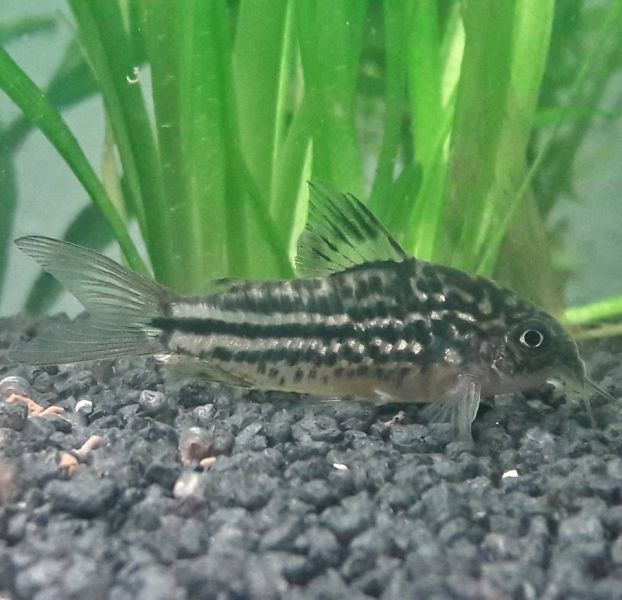
Food for armored catfish
The feeding of the mailed catfish is quite undemanding, because this species also eats almost everything. The animals like to eat dry food, as you know it from the specialist trade, or frozen food. mosquito larvae would be a real one here, for example Delicacies. Various other plant foods are also gladly taken. Until 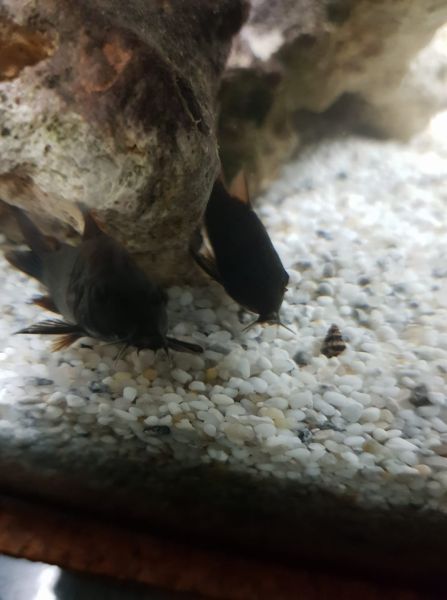 towards live food you can give the armored catfish everything. They are also important here variety and the dosed feeding. One should never overfeed. Very often the animals get a lot from the other residents, because not all the food is eaten completely and some always settles on the ground. This is then gladly accepted by the armored catfish. Natural products such as leaves and alder cones can also be served.
towards live food you can give the armored catfish everything. They are also important here variety and the dosed feeding. One should never overfeed. Very often the animals get a lot from the other residents, because not all the food is eaten completely and some always settles on the ground. This is then gladly accepted by the armored catfish. Natural products such as leaves and alder cones can also be served.
The more varied you feed, the longer the fish will delight you with their vitality and health. This applies to all species.
Breeding of armored catfish
Now let's get to Breeding of armored catfish. Most of the animals we offer in the trade come from a breed and are usually not wild caught. We can breed many species. Armored catfish are spawners, better said substrate spawner, which means that the female usually sticks the eggs to a smooth surface after successful fertilization. If you want to start breeding with wild-caught animals, then it will be quite difficult, because there is little success to prove. The animals would have to be perfectly adjusted to our conditions and the exact time, usually when the rainy season begins, should also be adhered to. Therefore, one seems to have a better chance of success if one breeds the animals that are common here.
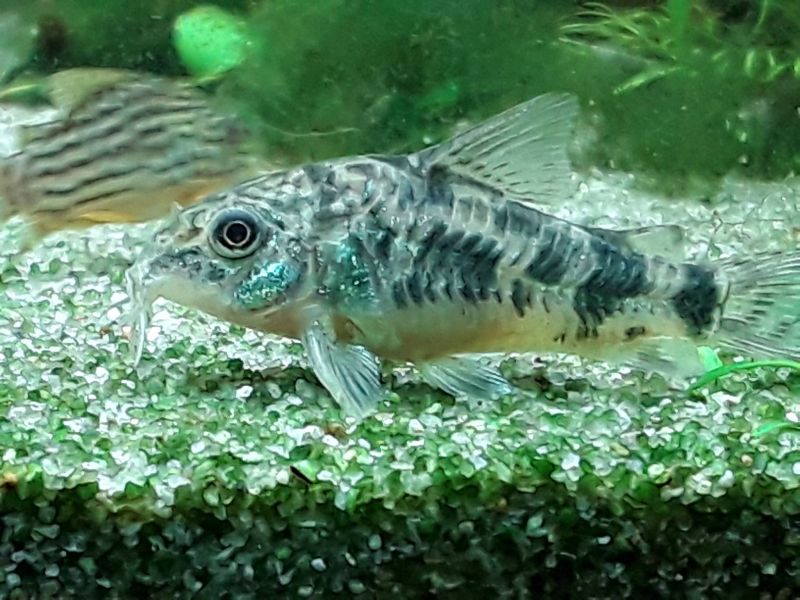
Adjusting the water values
As already described above, there are only a few requirements for the water parameters. However, if you want to start breeding, then you should be below 7 in terms of PH value and also significantly reduce the overall hardness. Then an osmosis system can also be useful. The females must first be made ready to spawn. It is also advisable to reduce the water temperature when changing the water. This can also encourage the female to spawn.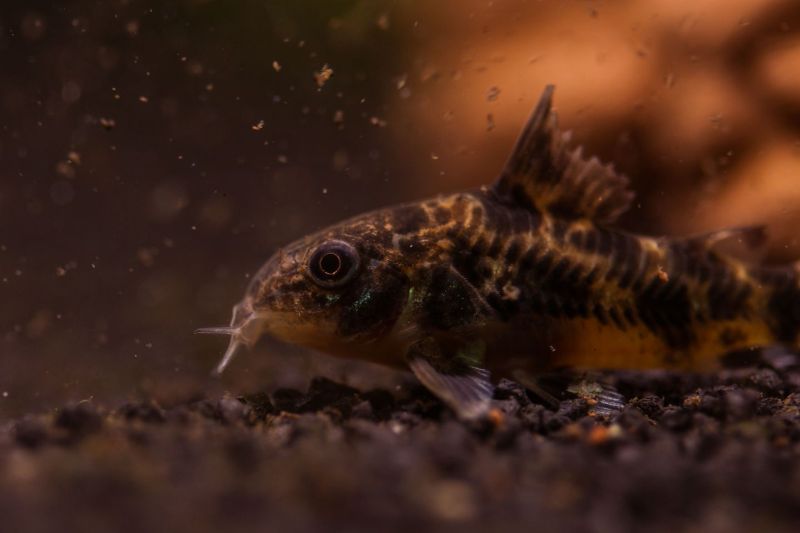
If the female wants to, then of course she has to look for a suitable male. When stocking, you should always make sure that there are a majority of males in the tank. A ratio of 3:1 is very good. If the female is swimming around quite nervously and excitedly, then this seems to be the right time to look for a male who will then deposit the sperm on the eggs. The males show their willingness to do so by opposing the female. The actual fertilization is usually not even noticed, because it happens quite quickly. The female lays the eggs in a pocket under the pectoral fins and the male's sperm goes directly onto them. The eggs are then attached to a smooth surface.
Take eggs out of the tank
If you have found the eggs, then you should take them out of the tank, because the armored catfish are spawn robber and nothing really would survive. That's why you should pull the eggs out in a separate tank. In order for this to be possible, you have to prepare suitable areas for laying and hope that the female will also accept them. Plastic parts, panes or even smooth furnishings are ideal for this.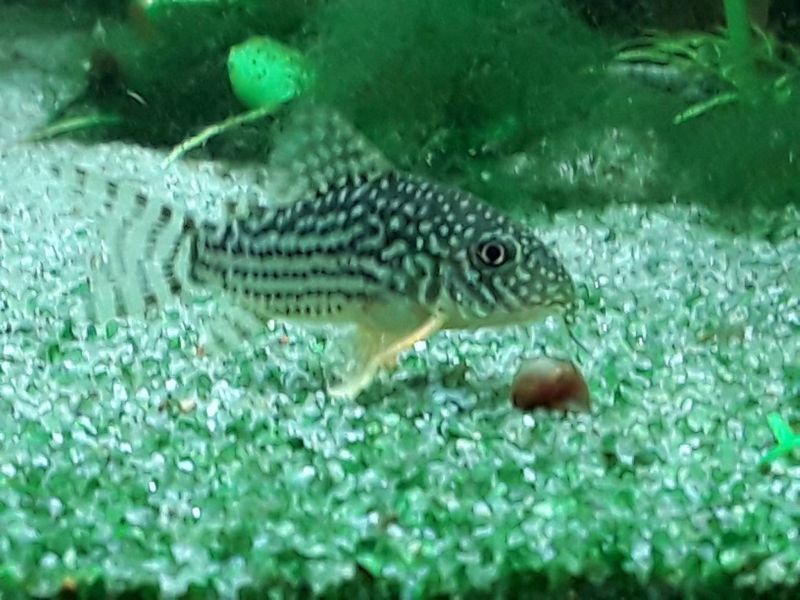
If you take these from the original tank, you have to pay attention to extreme cleanliness when rearing them. We would suggest and recommend a daily water change here. In addition, should on the fungal infection be respected.
After about a week, the young of the armored catfish hatch, which still have a yolk sac for the first days of feeding. Then it's time to offer food, several times a day. These are of course microorganisms like Nauplia and also Artemia most suitable. You can even breed them yourself.
Then we would not describe the breeding as the easiest. guppy or catfish are much easier here. Nevertheless, there are many breeders in Germany who have specialized in the different species of armored catfish.
Finally a nice one Video for animal breeding
Thanks also to the many Facebook group members for the great pictures: https://www.facebook.com/groups/Aquaristik/permalink/1711063658930935/
